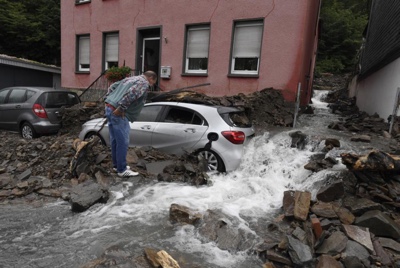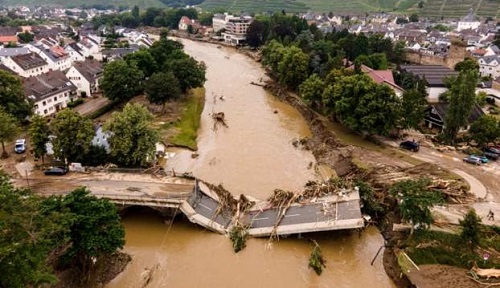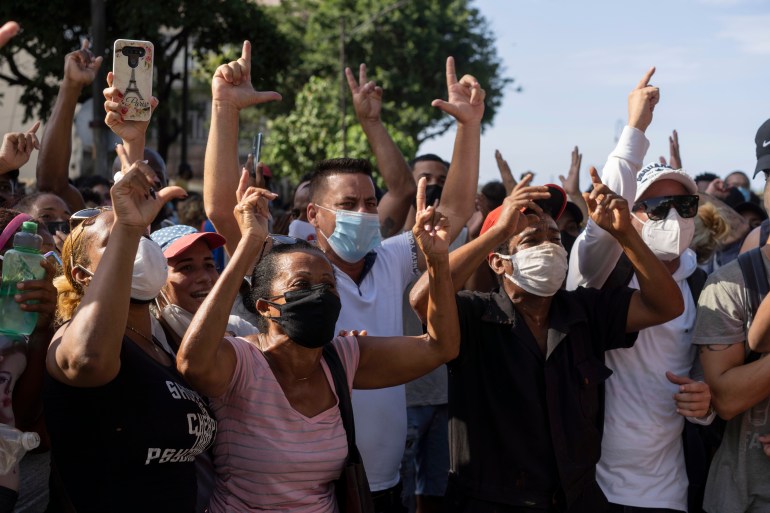Amanda Marcotte, Salon
July 16, 2021

Fox News host Tucker Carlson (Screenshot)
On Thursday, Surgeon General Vivek Murthy did something no surgeon general has done before: He issued a warning — not about what people are consuming with their bodies — but with their minds.
"I am urging all Americans to help slow the spread of health misinformation during the COVID-19 pandemic and beyond," Murthy asked in the health advisory titled "Confronting Health Misinformation." At a White House press conference Thursday, Murthy reserved his harshest criticism for tech companies, who he said "allowed people who intentionally spread misinformation — what we call disinformation — to have extraordinary reach" and whose algorithms are "pulling us deeper and deeper into a well of misinformation." White House press secretary Jen Psaki said: "We've increased disinformation research and tracking within the Surgeon General's Office. We are flagging problematic posts for Facebook that spread disinformation."
This advisory may not seem like it, but it's a very big deal.
From the highest levels of the federal government, such a warning is an official recognition of how, now that vaccines are widely available, COVID-19 spreading should be understood more as a social phenomenon than a biological one. Murthy also wisely centered how much this false information is being deliberately spread by bad actors and zeroed in on the fact that the tech companies are letting lies spread on social media because it's profitable to do so.
But that last point really underscores why the spread of disinformation is such a sticky problem, and why fact-checking and better health information is probably not enough to convince people, especially Republicans, to get vaccinated. Misinformation isn't really the cause of people refusing the COVID-19 vaccination. It's just the excuse people are wielding to justify an extremely stupid choice to risk their own health to demonstrate their tribalist loyalties to the Republican Party and their hatred of the Democrats. In this particular chicken-and-egg situation, the rejection of the vaccine comes first, and the lies are spread to rationalize a decision that's already been made.
In much of the media coverage of anti-vaxxers, the tendency is to frame them as passive victims of misinformation, as if they saw some scare story on Facebook about vaccine dangers and decided, based on that, to reject the vaccine. The Washington Post, for instance, published a piece on Thursday about the COVID-19 outbreak in Springfield, Missouri, which is happening because of widespread rejection of vaccines in the area. Folks who spoke to the reporters had a million excuses for why they weren't vaccinated yet, and all were presented in the article at face value. One 30-year-old man claims he's safe because he "works an overnight shift at Walmart and has little interaction with other employees or customers." Another (who died of COVID-19) was "worried about side effects as a result of her complicated medical history." Another who is "pregnant with their second child, declined to get vaccinated because she wasn't sure how the shots would affect the pregnancy." But her husband, who is not pregnant, insisted he also didn't need the vaccine because "it's no worse than the flu," which is something that health experts also recommend vaccinating against annually.
I'm not a mind reader, but let's face it: This is honking nonsense. Folks aren't getting vaccinated because they have real concerns. It's because they live in right-wing America and have been made to feel that getting the vaccine is disloyal to Donald Trump, disloyal to Fox News, and above all else, a great way to stick it to the liberals. That's why political affiliation predicts anti-vaccination sentiment better than pretty much any other factor. What the Washington Post reporters diligently recorded from these Missouri anti-vaxxers was not reasons, but rationalizations. And that, more than any other factor, is why misinformation about vaccines is so wildly popular on social media.
People, especially conservatives, love reading and sharing lies that justify their worldview. And, by and large, they aren't too concerned about the moral implications of lying or spreading lies. On the contrary, the widespread victim mentality on the right allows many of them to feel justified in spreading lies, as it feels like some sort of payback to know-it-all liberals.
Murthy is right that lies tend to be profitable for social media companies and this is why: Lies are in strong demand, especially on the right. Conservatives who share this stuff aren't passive consumers. They tend to reward people who tell them lies, which is why someone like Tucker Carlson has such high ratings and only gets more popular the more full of shit he is.
A recent study out of MIT confirms this frustrating reality about why people spread misinformation. Researchers fanned out on Twitter, looking for people sharing "any one of 11 frequently repeated false news articles." With excruciating politeness, the researchers corrected the false information, with replies like, "I'm uncertain about this article — it might not be true. I found a link on Snopes that says this headline is false," with a link to the true information.
How did people react to being politely corrected?
Not like folks who mean well and are embarrassed at being caught mistakenly spreading a falsehood, that's for sure. Instead, as researcher Mohsen Mosleh noted, "they retweeted news that was significantly lower in quality and higher in partisan slant, and their retweets contained more toxic language." In other words, people know that what they're sharing online is garbage. They just don't care, and, in fact, they will double down as a defensive reaction if they're called out for it.
As the researchers found, this problem was shared across partisan identities, which shouldn't be surprising to anyone who has gently tried to correct a progressive friend who is a fan of some of the more noxious #resistance grifters out there. But there should also be no doubt that the misinformation problem is much worse on the right, as other research has consistently shown. And when it comes to misinformation about vaccine safety, it's almost exclusively a right-wing problem.
So Murthy is right that social media companies need to do more to crack down on misinformation about the COVID-19 vaccine spreading rampantly on their platforms. Putting little disclaimers on posts that send people to the CDC website ain't it. That would work if people were sharing bad information in good faith, and were open to being gently corrected by more scientifically sound information. But the reason that lies perform well on social media is not that people are being duped, but because people — especially conservatives — love lies and gobble them down like candy. The only thing that will work is cutting them off entirely.
Misinformation is not the cause of anti-vaccination sentiment, but that doesn't mean that stopping lies is a waste of time.
Conservatives are using these vaccination lies — like propaganda is generally used — to stiffen their resolve, reaffirm their tribal identity, and develop talking points to bat away concerns from relatives and friends who are trying to get them to protect their health. Understanding how such misinformation functions is crucial to combat its effect. The real issue here is that vaccines are being talked about in ways that are politicized and emotional, instead of as a banal bit of health care. As long as getting the vaccine is associated with liberalism, huge swaths of the country will be dug in against doing it. Crushing misinformation is crucial, but only part of what needs to be a larger effort to de-politicize the COVID-19 pandemic.






/https://www.thestar.com/content/dam/thestar/opinion/contributors/2021/07/16/buying-new-fighter-jets-would-waste-billions-of-dollars-and-increase-the-likelihood-of-another-climate-disaster/lytton_fire1.jpg)




![As tourism dried up, the Cuban economy shrank 11 percent in 2020, according to Economy Minister Alejandro Gil, its deepest slump since the collapse of the Soviet Union [File: Natalia Favre/Bloomberg]](https://www.aljazeera.com/wp-content/uploads/2021/07/373529474.jpg?resize=770%2C513)




